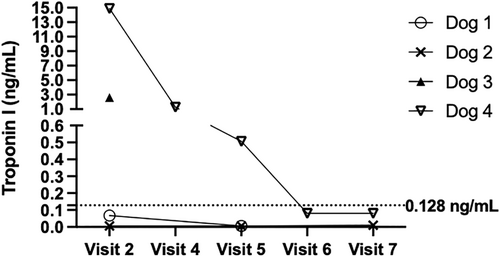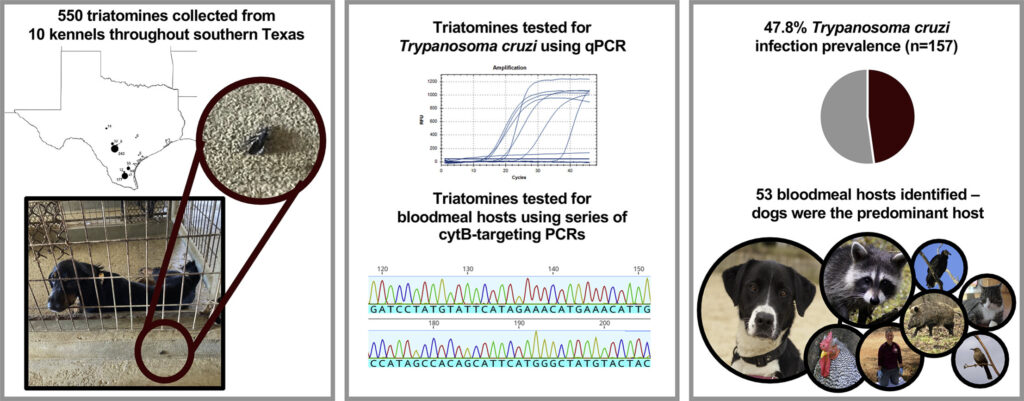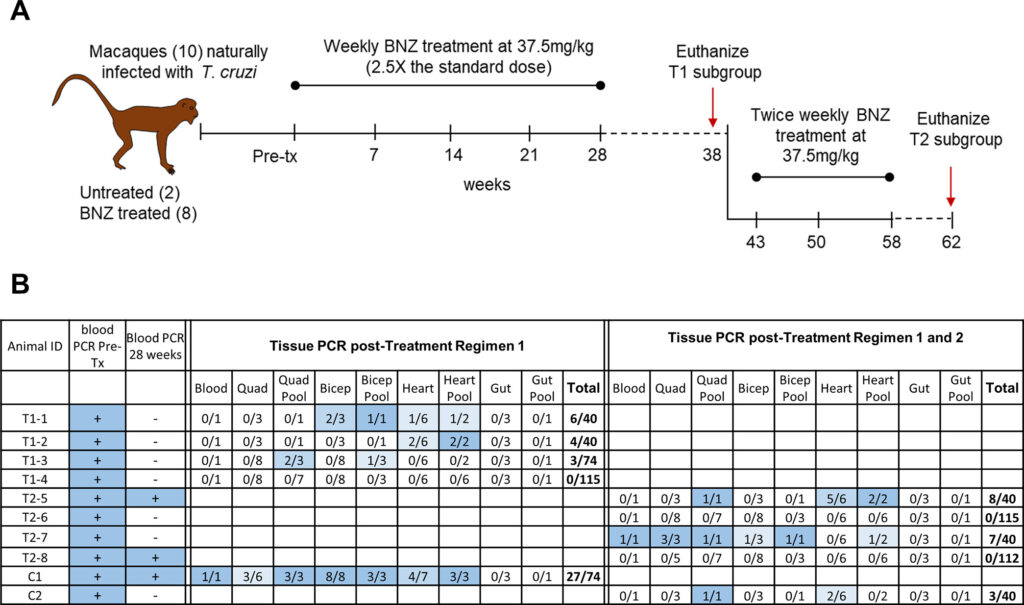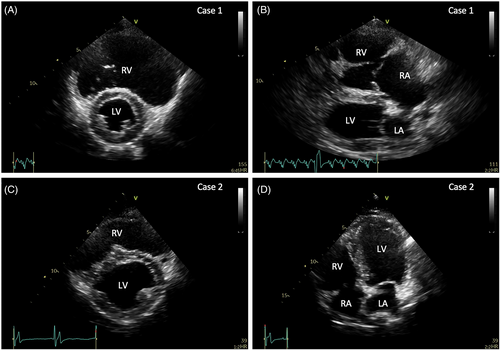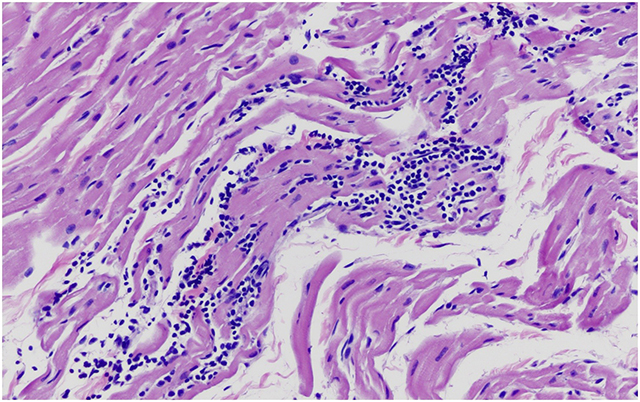The following reflects peer-reviewed journal articles published by Texas A&M team members about Canine Chagas Collaborative programs.
Electrocardiographic abnormalities… 2024 JAVMA article
Title: Electrocardiographic abnormalities are associated with seropositive Trypanosoma cruzi infection status using a simplified cardiac diagnostic evaluation in dogs Authors: Kendra A. Zelachowski, Stephanie Collins, Marty Henderson,…
Positive clinical outcome… 2024 JVIM article
Title: Positive clinical outcome using a modified dosing regimen of benznidazole in dogs at high risk for infection or acutely infected with Trypanosoma cruzi Authors: Sukjung…
Abundant triatomines… 2024 Acta Tropica article
Title: Abundant triatomines in Texas dog kennel environments: Triatomine collections, infection with Trypanosoma cruzi, and blood feeding hosts Authors: R.E. Busselman, R. Curtis-Robles, A.C. Meyers,…
Frequency Variation… 2023 Antimicrobial Agents and Chemotherapy article
Title: Frequency Variation and Dose Modification of Benznidazole Administration for the Treatment of Trypanosoma cruzi Infection in Mice, Dogs, and Nonhuman Primates Authors: Juan M….
Trypanosoma cruzi infection… 2024 JAVMA article
Title: Trypanosoma cruzi infection diagnosed in dogs in nonendemic areas and results from a survey suggest a need for increased Chagas disease awareness in North…
Prophylactic low-dose… 2022 PLoS Neglected Tropical Diseases article
Title: Prophylactic low-dose, bi-weekly benznidazole treatment fails to prevent Trypanosoma cruzi infection in dogs under intense transmission pressure Authors: Juan M. Bustamante, Angel M. Padilla,…
Antiparasitic treatment… 2022 JVIM article
Title: Antiparasitic treatment with itraconazole and amiodarone in 2 dogs with severe, symptomatic Chagas cardiomyopathy Authors: Elizabeth L. Malcolm, Ashley B. Saunders, Jordan P. Vitt,…
Fatal Chagas myocarditis… 2021 Veterinary Parasitology: Regional Studies and Reports article
Title: Fatal Chagas myocarditis in government working dogs in the southern United States: Cross-reactivity and differential diagnoses in five cases across six months Authors: Alyssa…
Cardiac diagnostic… 2021 JVIM article
Title: Cardiac diagnostic test results and outcomes in 44 dogs naturally infected with Trypanosoma cruzi Authors: Derek J. Matthews, Ashley B. Saunders, Alyssa C. Meyers,…
Prevalence of Trypanosoma cruzi infection… 2020 Veterinary Parasitology article
Title: Prevalence of Trypanosoma cruzi infection and associated histologic findings in domestic cats (Felis catus) Authors: Italo B. Zecca, Carolyn L. Hodo, Sarah Slack, Lisa…
Risk factors… 2019 JVIM article
Title: Risk factors and select cardiac characteristics in dogs naturally infected with Trypanosoma cruzi presenting to a teaching hospital in Texas Authors: Alyssa C. Meyers,…
Help Us!
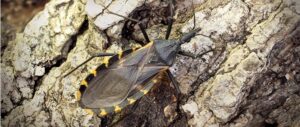
Have you found a kissing bug?
Submit it to the Kissing Bug Community Science Program!
This program has received nearly 10,000 kissing bugs from the public since 2013 from across 28 states, with photo submissions spanning 10 countries! We welcome your submissions to advance the science.


